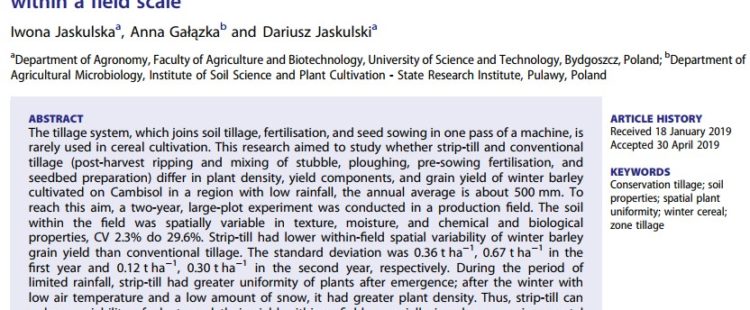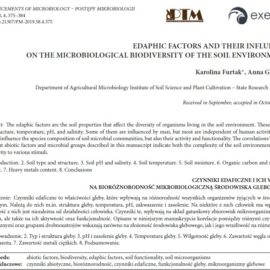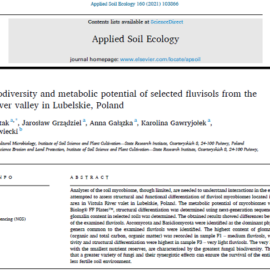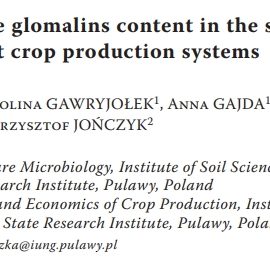Jaskulska I., Gałązka A., Jaskulski D., Strip-till as a means of decreasing spatial variability of winter barley within a field scale. Acta Agriculturae Scandinavica, 2019, https://doi.org/10.1080/09064710.2019.1616812 (20 pkt. MNiSW, 0.894 IF)
LINK do publikacji: https://doi.org/10.1080/09064710.2019.1616812
ABSTRACT
The tillage system, which joins soil tillage, fertilisation, and seed sowing in one pass of a machine, is rarely used in cereal cultivation. This research aimed to study whether strip-till and conventional tillage (post-harvest ripping and mixing of stubble, ploughing, pre-sowing fertilisation, and seedbed preparation) differ in plant density, yield components, and grain yield of winter barley cultivated on Cambisol in a region with low rainfall, the annual average is about 500 mm. To reach this aim, a two-year, large-plot experiment was conducted in a production field. The soil within the field was spatially variable in texture, moisture, and chemical and biological properties, CV 2.3% do 29.6%. Strip-till had lower within-field spatial variability of winter barley grain yield than conventional tillage. The standard deviation was 0.36 t ha−1, 0.67 t ha−1 in the first year and 0.12 t ha−1, 0.30 t ha−1 in the second year, respectively. During the period of limited rainfall, strip-till had greater uniformity of plants after emergence; after the winter with low air temperature and a low amount of snow, it had greater plant density. Thus, strip-till can reduce variability of plants and their yield within a field, especially in adverse environmental conditions.



